The history of coal production in the United States
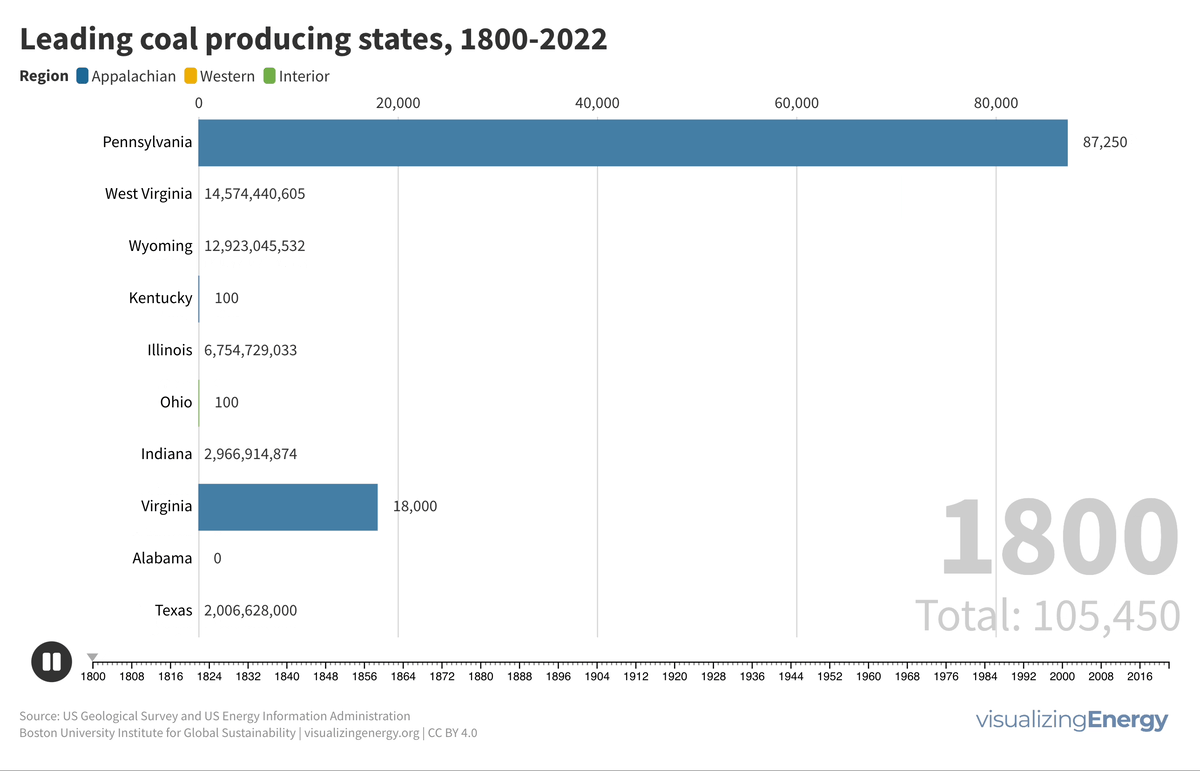
Coal has played a pivotal role in the United States’ industrial history, fueling steel production, electricity generation, and economic growth in the early 20th century. However, this legacy also comes with significant environmental and health issues, including miner health problems, landscape degradation, abandoned mines, and pollution.
World electricity generation since 1900
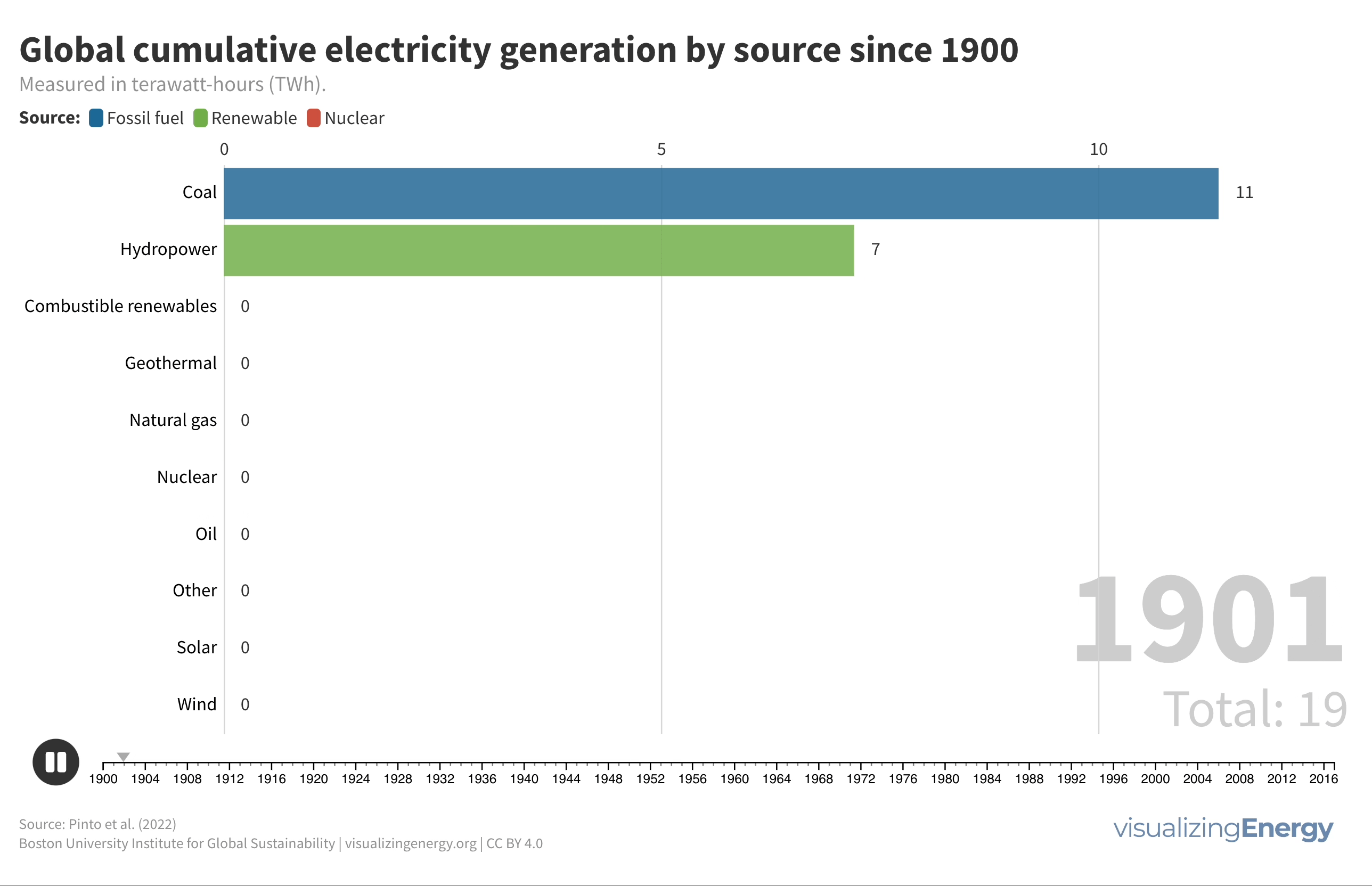
From 1900 to 2022, global electricity generation grew remarkably from 66.4 TWh to 29,165 TWh. Fossil fuels maintained a stable share of around 60% throughout this period, while renewables like wind and solar saw rapid growth from the 2000s. The 1960s saw a rise in oil power plants, but energy price shocks in the 1970s shifted focus to natural gas and nuclear generation, with significant investments in gas power plants from the 2000s onward.
Power plant efficiency since 1900
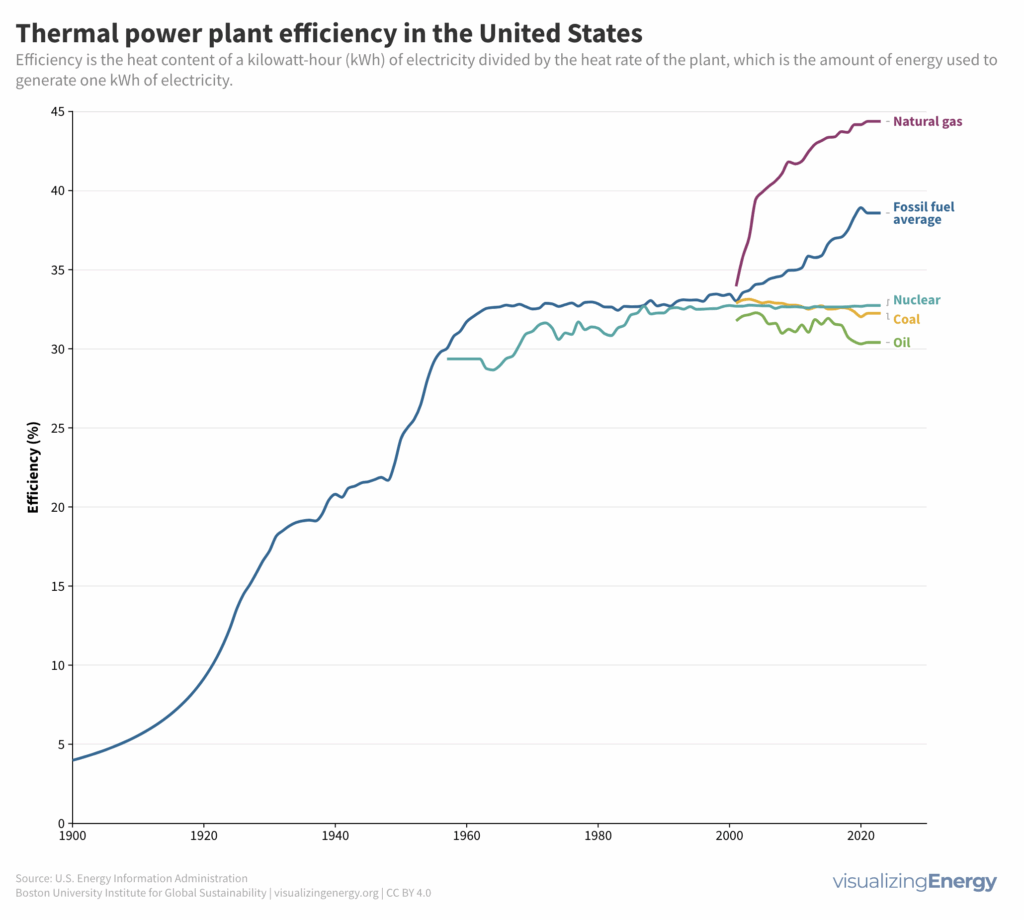
The efficiency of a thermal power plant is the ratio of the electricity output to the energy input, taking into account the heat losses. Over the years, the average efficiency of thermal power plants using fossil fuels in the United States has significantly increased, from 4% in 1900 to 43% in 2023. This improvement is attributed to reducing heat loss in the three main energy conversion processes: fuel combustion, steam generation, and electricity generation.
Two centuries of declining prices for personal transportation in the United Kingdom
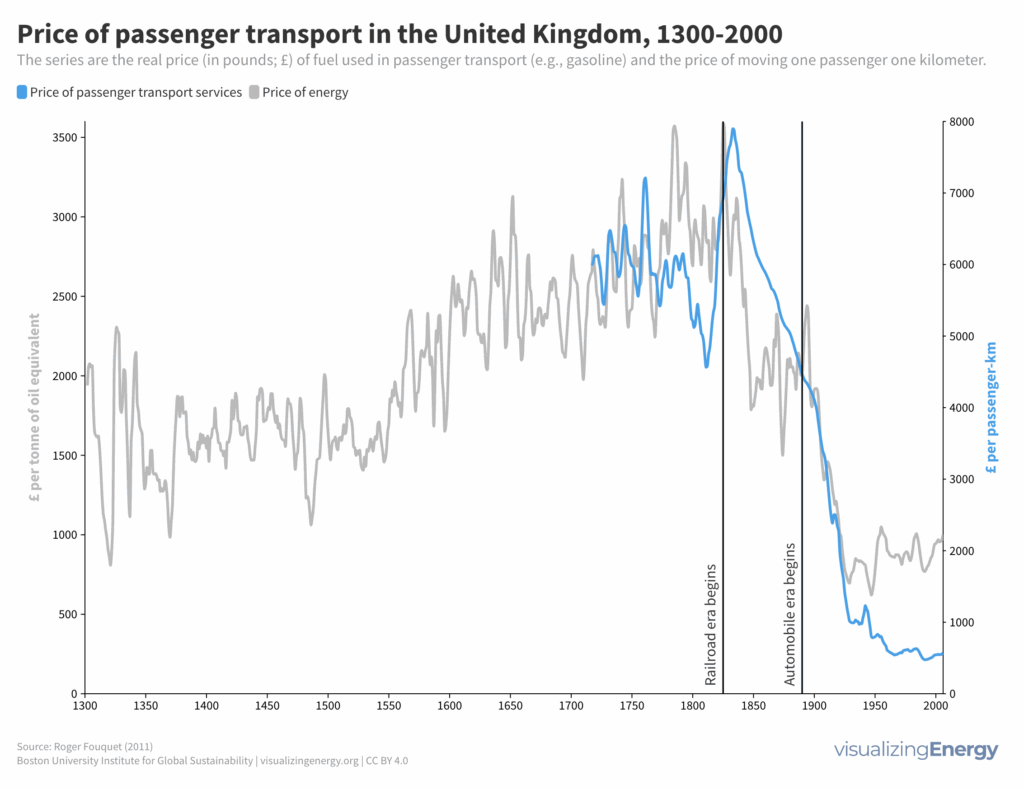
Access to personal mobility has played a crucial role in people’s life satisfaction, with personal vehicles revolutionizing daily life since the early 1900s. The number of global car registrations has dramatically increased over the years, reaching 1.1 billion in 2019. The energy historian Roger Fouquet explored the impact of personal transportation services in the United Kingdom from the 14th to the 20th century, revealing the economic, social, and environmental changes brought about by the expansion of personal travel.
How the price of lighting decreased 12,000-fold in the United Kingdom

The transition from traditional lighting methods to modern illumination in the United Kingdom has had significant social, economic, and environmental consequences. Historically, lighting services relied on candles made from animal fat, but the 19th century saw the introduction of new fuels such as town gas, kerosene, and eventually electricity.
Maximum efficiencies of engines and turbines, 1700-2000

Throughout human history, the development of new machines to replace and enhance human and animal labor has played a major role in the energy sector. Key advancements include combustion engines and turbines, which convert fuels like gasoline and natural gas into useful work.
How the power of machines transformed the world

Throughout history, humans relied on their own muscles and later utilized draft animals and machines to perform physical tasks. The transformative impact of waterwheels, windmills, and the steam engine marked significant milestones in human energy history. Now, the transition to clean energy is crucial to mitigate the environmental impact and shape a sustainable future.
Long run consumption and price of energy services in the United Kingdom
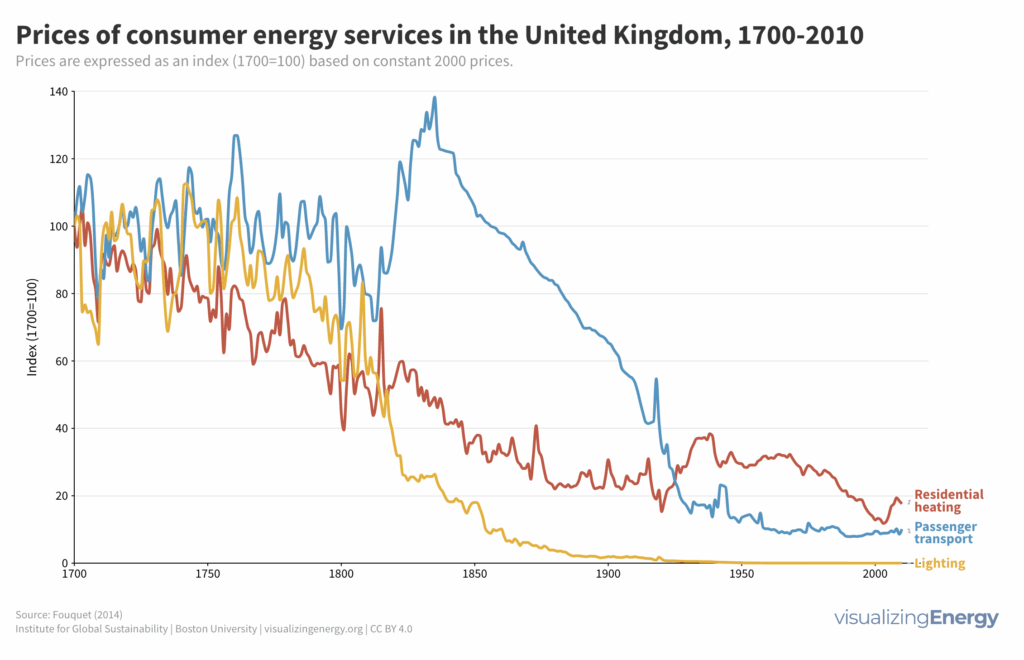
Roger Fouquet’s research on the United Kingdom highlights the remarkable growth in energy consumption over centuries. Factors like fuel shifts, improved efficiency, and changing preferences drove the increases. However, efficiency gains led to the rebound effect, where saved energy was partly offset by increased consumption.
Explore the world history of nuclear reactors, 1951-2022

Explore the global history of nuclear reactors from 1951 to 2022. This visualization showcases 626 operational reactors, highlighting the dominance of pressurized light water reactors (PWRs). Different reactor types exhibit geographic patterns, with retired reactors and ongoing upgrades observed in various countries. The average age of reactors in the United States was 41 years in 2021.
What prime movers have generated the most electricity since 1900?
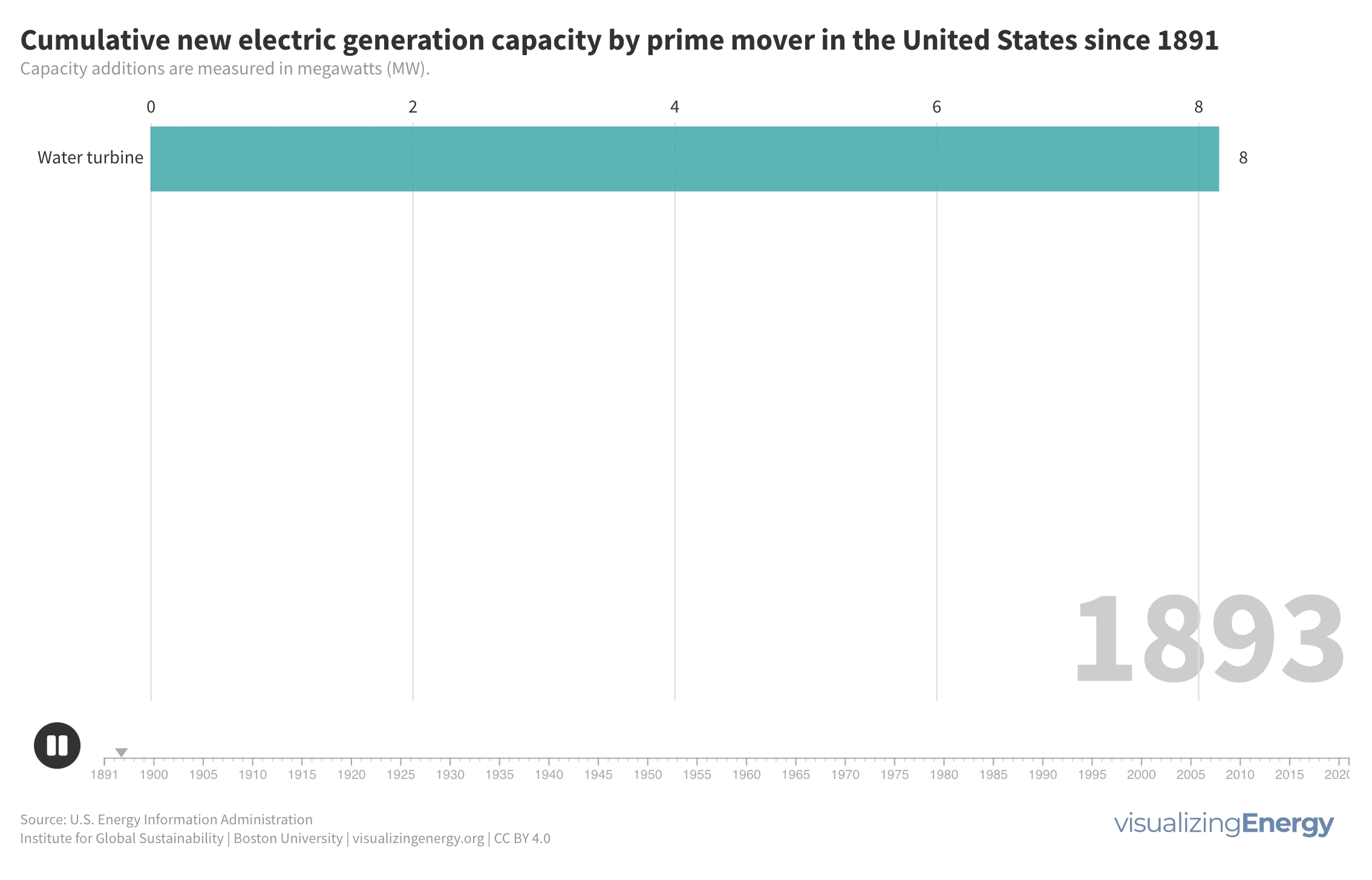
Prime movers are devices that convert natural sources of energy into mechanical energy to generate electricity. Historically, hydropower from water turbines and steam turbines played major roles. Gas turbines emerged as a more efficient and cost-effective option. In recent years, solar cells and wind turbines have made significant advancements, providing competitive and environmentally friendly alternatives to traditional energy sources.
